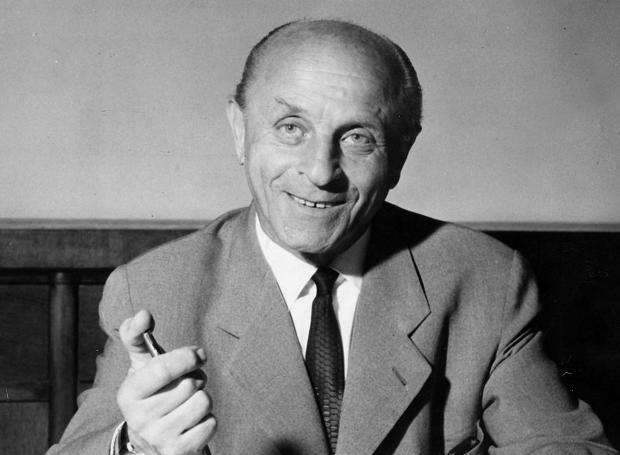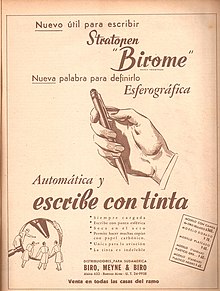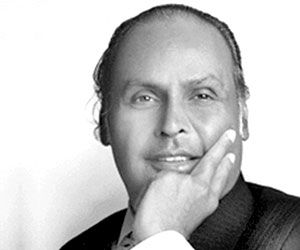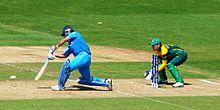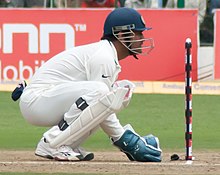Dhoni holds numerous captaincy records such as most wins by an Indian captain in Tests and ODIs, and most back-to-back wins by an Indian captain in ODIs. He took over the ODI captaincy from
Rahul Dravid in 2007 and led the team to its first-ever bilateral ODI series wins in Sri Lanka and New Zealand. Under his captaincy, India won the
2007 ICC World Twenty20, the CB Series of 2007–08, the 2010 Asia Cup, the
2011 ICC Cricket World Cup and the
2013 ICC Champions Trophy. In the final of the 2011 World Cup, Dhoni scored 91 not out off 79 balls to take India to victory for which he was awarded the Man of the Match. In June 2013, when India defeated England in the final of the Champions Trophy in England, Dhoni became the first captain to win all three ICC limited-overs trophies (World Cup, Champions Trophy and the World Twenty20). After taking up the Test captaincy in 2008, he led the team to series wins in New Zealand and West Indies, and the
Border-Gavaskar Trophyin 2008, 2010 and 2013. In 2009, Dhoni also led the Indian team to number one position for the first time in the
ICC Test rankings. In 2013, under his captaincy, India became the first team in more than 40 years to
whitewash Australia in a Test series. In the
Indian Premier League, he captained the
Chennai Super Kings to victory at the
2010 and
2011 seasons, along with wins in the
2010 and
2014 editions of
Champions League Twenty20. He announced his retirement from Tests on 30 December 2014.
Dhoni has been the recipient of many awards, including the
ICC ODI Player of the Year award in 2008 and 2009 (the first player to win the award twice), the
Rajiv Gandhi Khel Ratna award in 2007 and the
Padma Shri, India's fourth highest civilian honour, in 2009. He was named as the captain of ICC World Test XI and ICC World ODI XI teams for 2009. The Indian
Territorial Army conferred the honorary rank of
Lieutenant Colonel to Dhoni on 1 November 2011. He is the second Indian cricketer after
Kapil Dev to have received this honour. In 2011,
Time magazine included Dhoni in its annual
Time 100 list as one of the "Most Influential People in the World." In 2012,
SportsPro rated Dhoni as the sixteenth most marketable athlete in the world. In June 2015, Forbes ranked Dhoni at 23rd in the
list of highest paid athletes in the world, estimating his earnings at
US$31 million.
Early life and background
Dhoni studied at
DAV Jawahar Vidya Mandir, Shyamali, Ranchi, Jharkhand where he initially excelled in badminton and
football and was selected at district and club level in these sports. Dhoni was a
goalkeeper for his football team and was sent to play cricket for a local cricket club by his football coach. Though he had not played cricket, Dhoni impressed with his wicket-keeping skills and became the regular wicketkeeper at the Commando cricket club (1995–1998). Based on his performance at club cricket, he was picked for the 1997/98 season Vinoo Mankad Trophy Under-16 Championship and he performed well. Dhoni focused on cricket after his 10th
standard Dhoni was a Train Ticket Examiner (TTE) at
Kharagpur railway station from 2001 to 2003, under South Eastern Railway in Midnapore (W), a district in
West Bengal. His colleagues remember him as a very honest, straightforward employee of the Indian Railways. But he also had a mischievous side to his personality. Once, while staying at the railway quarters, Dhoni and a couple of his friends covered themselves in white bedsheets and walked around in the complex late in the night. The night guards were fooled into believing that there were ghosts moving around in the complex. The story made big news on the next day.
Early career
Junior cricket in Bihar
In 1998 Dhoni was selected by Deval Sahay to play for the Central Coal Fields Limited (CCL) team.
[24] Dhoni was included in the Bihar U-19 squad for the 1998–99 season and scored 176 runs in 5 matches (7 innings) as the team finished fourth in the group of six and did not make it to the quarter-finals. Dhoni was not picked for the East Zone U-19 squad (CK Nayudu Trophy) or Rest of India squad (MA Chidambaram Trophy and Vinoo Mankad Trophy).
Bihar U-19 cricket team advanced to the finals of the 1999–2000 Cooch Behar Trophy where Dhoni made 84 to help Bihar post a total of 357. Bihar's efforts were dwarfed by
Punjab U-19s' 839 with Dhoni's future national squad teammate
Yuvraj Singh making 358. Dhoni's contribution in the tournament included 488 runs (9 matches, 12 innings), 5 fifties, 17 catches and 7 stumpings. Dhoni made it to the East Zone U-19 squad for the CK Nayudu trophy but scored only 97 runs in four matches as East Zone lost all four matches and finished last in the tournament.
Bihar cricket team
Dhoni made his
Ranji Trophy debut for
Bihar in the 1999–2000 season as an eighteen-year-old. He made a half century in his debut match scoring 68* in the second innings against
Assam cricket team. Dhoni finished the season with 283 runs in 5 matches. Dhoni scored his maiden first-class century while playing for
Bihar against
Bengal in the 2000/01 season in a losing cause. Apart from this century, his performance in the 2000/01 season did not include another score over fifty and in the 2001/02 season he scored just five fifties in four Ranji matches.
Jharkhand cricket team
Dhoni's performance in the 2002–03 season included three half-centuries in the Ranji Trophy and a couple of half-centuries in the Deodhar Trophy as he started gaining recognition for his lower-order contribution as well as hard-hitting batting style. In the 2003/04 season, Dhoni scored a century (128*) against Assam in the first match of the Ranji ODI tournament. He was part of the
East Zone squad that won the Deodhar Trophy that year and contributed with 244 runs in 4 matches. In the Duleep Trophy finals, Dhoni was picked over international cricketer
Deep Dasgupta to represent East Zone. He scored a fighting half-century in the second innings in a losing cause.
India A team
He was recognised for his efforts in the 2003/04 season, especially in the ODI format and was picked for the
India A squad for a tour of
Zimbabwe and
Kenya. Against the Zimbabwe XI in
Harare Sports Club, Dhoni had his best wicket-keeping effort with 7 catches and 4 stumpings in the match.
[35] In the tri-nation tournament involving Kenya, India A and Pakistan A, Dhoni helped India A chase down their target of 223 against Pakistan A with a half-century. Continuing his good performance, he scored back to back centuries – 120 and 119* – against the same team. Dhoni scored 362 runs in 6 innings at an average of 72.40 and his performance in the series received attention from the then
Indian captain – Sourav Ganguly and Ravi Shastri amongst others. However, the India A team coach
Sandeep Patil recommended Dinesh Karthik for a place in the Indian squad as wicket-keeper/batsman.
ODI career
The Indian ODI team in the early 2000s saw
Rahul Dravid as the wicket-keeper to ensure that the wicket-keeper spot didn't lack in batting talent. The team also saw the entry of wicket-keeper/batsmen from the junior ranks with talents like
Parthiv Patel and
Dinesh Karthik (both
India U-19 captains) named in the Test squads. With Dhoni making a mark in the India A squad, he was picked in the ODI squad for the
Bangladesh tour in 2004/05. Dhoni did not have a great start to his ODI career, getting
run out for a duck on debut. In spite of an average series against
Bangladesh, Dhoni was picked for the Pakistan ODI series. In the second match of the
series, Dhoni, in his fifth one-day international, scored 148 in
Visakhapatnam off only 123 deliveries. Dhoni's 148 surpassed the earlier record for the highest score by an Indian wicket-keeper,
[44] a record that he would re-write before the end of the year.
Dhoni had few batting opportunities in the first two games of the
Sri Lankan bilateral ODI series (October–November 2005) and was promoted to No. 3 in the third ODI at
Sawai Mansingh Stadium (
Jaipur). Sri Lanka had set India a target of 299 after a
Kumar Sangakkara century and, in reply, India lost Tendulkar early. Dhoni was promoted to accelerate the scoring and ended the game with an unbeaten 183 off 145 balls, winning the game for India. The innings was described in
Wisden Almanack (2006) as 'Uninhibited, yet anything but crude'. The innings set various
records including the highest individual score in ODI cricket in the second innings, a record that still stands. Dhoni ended the series with the highest run aggregate (346) and was awarded the Man of the Series award for his efforts. In December 2005, Dhoni was rewarded a B-grade contract by the
BCCI.

Dhoni bowling in the nets. He rarely bowls at international level.
India scored 328 in 50 overs with Dhoni contributing 68 in their first match of 2006 against
Pakistan. However, the team finished poorly scoring just 43 runs in the last eight overs and lost the match due to
Duckworth-Lewis method. In the third match of the series, Dhoni came in with India in a precarious situation and scored 72 runs off just 46 balls that included 13 boundaries to help India take a 2–1 lead in the series.The final match of the series had a repeat performance as Dhoni scored 77 runs off 56 balls to enable India win the series 4–1. Due to his consistent ODI performances, Dhoni overtook
Ricky Ponting as number one in the
ICC ODI Rankings for batsmen on 20 April 2006.
[54] His reign lasted just a week as
Adam Gilchrist's performance against
Bangladesh moved him to the top spot.
Two cancelled series in Sri Lanka, one due to the withdrawal of South Africa from the Unitech Cup due to security concerns
[56] and the replacement three-match ODI bilateral series against Sri Lanka washed due to rain,
[57] was India's prelude to another disappointing tournament –
DLF Cup 2006-07. Dhoni scored 43 runs as the team lost twice in three games and did not qualify for the finals. India's lack of preparation showed in the
2006 ICC Champions Trophy as they lost to
West Indies and
Australia, though Dhoni scored a half-century against West Indies. The story of the
ODI series in
South Africa was the same for both Dhoni and India as Dhoni scored 139 runs in 4 matches and India lost the series 4–0. From the start of the West Indies ODI series, Dhoni had played 16 matches, hit just two fifties and averaged 25.93. Dhoni received criticism on his wicket-keeping technique from former wicket-keeper
Syed Kirmani.
Preparations for the
2007 Cricket World Cup improved as India recorded identical 3–1 victories over
West Indies and
Sri Lanka and Dhoni had averages in excess of 100 in both these series. However, India unexpectedly crashed out the World Cup after losses to Bangladesh and Sri Lanka in the group stage. Dhoni was out for a
duck in both these matches and scored just 29 runs in the tournament. After the loss to
Bangladesh in
2007 Cricket World Cup, the house that Dhoni was constructing in his home-town Ranchi was vandalised and damaged by political activists of
JMM. The local police arranged for security for his family as India exited the World Cup in the first round.
Dhoni put his disappointing performances in the World Cup behind him by scoring 91* against
Bangladesh after India were left in a tight spot earlier in the run-chase. Dhoni was declared the Man of the Match for his performance, his fourth in ODI cricket. He was also later adjudged the Man of the Series after the third game of the series was washed away. Dhoni had a good Afro-Asia Cup, scoring 174 runs in 3 matches at an average of 87.00, with a blitzkrieg 139 not out of 97 balls, a Man of the Match innings, in the third ODI.
Dhoni was named vice-captain of the ODI team for the series against South Africa in Ireland and the subsequent India-England seven-match ODI series. Dhoni, who received a 'B' grade contract in December 2005, was awarded an 'A' grade contract in June 2007. And also he was elected as captain of the Indian squad for the World Twenty20 in September 2007. On 2 September 2007, Dhoni equaled his idol Adam Gilchrist's international record for the most dismissals in an innings in ODI by catching five English players and stumping one. He led India to the ICC World Twenty 20 trophy in South Africa with a victory over arch-rivals Pakistan in an intensely fought final on 24 September 2007, and became the second Indian captain to have won a World Cup in any form of cricket, after
Kapil Dev. During the series between India and Australia, Dhoni hit an aggressive 124 runs in just 107 balls, in the second ODI, and a measured knock of 71 runs in 95 balls, along with Yuvraj Singh, saw India home by 6 wickets, in the third ODI. Dhoni took his first wicket in international cricket on 30 September 2009. He bowled
Travis Dowlin of the
West Indies during a match of the 2009 Champions Trophy.
Dhoni topped the ICC ODI Batsman rankings for several months in 2009.
Michael Hussey from Australia replaced him at the top spot at the beginning of 2010.
Dhoni had an excellent year in ODIs in 2009 scoring 1198 runs in just 24 innings at an astonishing average of 70.43. Dhoni was also the joint top-scorer in ODIs in 2009 along with Ricky Ponting, but the latter having played in 30 innings.
On 12 February 2012, Dhoni made an unbeaten 44 to guide
India to their first win over
Australia at Adelaide. In the final over, he hit a monstrous six which traveled 112 metres off the bowling of
Clint McKay. During the post-match presentation, he described this six as more important than the one he hit during the ICC World Cup final in 2011.
On 2 November 2013, Dhoni became the second India batsman after Sachin Tendulkar to aggregate 1,000 or more ODI-runs against Australia.
Test career
Following his good one-day performance against Sri Lanka, Dhoni replaced
Dinesh Karthik in December 2005 as the Indian Test wicket-keeper.
[66] Dhoni scored 30 runs in his debut match that was marred by rain. Dhoni came to the crease when the team was struggling at 109/5 and as wickets kept falling around him, he played an aggressive innings and was the last man dismissed.
[67] Dhoni made his maiden half-century in the second Test and his quick scoring rate (half century came off 51 balls) aided India to set a target of 436 and the Sri Lankans were bowled out for 247.
India toured Pakistan in January–February 2006 and Dhoni scored his maiden century in the second Test at
Faisalabad. India was left in a tight spot as Dhoni was joined by
Irfan Pathan with the team still 107 away from avoiding a follow-on. Dhoni played his typical aggressive innings as he brought up his maiden Test hundred in just 93 balls after scoring the first fifty in just 34 deliveries.
Dhoni followed the century up with some prosaic batting performances over the next three matches, one against Pakistan that India lost and two against England that had India holding a 1–0 lead. Dhoni was the top scorer in India's first innings in the third Test at
Wankhede Stadium as his 64 aided India post a respectable 279 in reply to England's 400. However Dhoni and the Indian fielders dropped catches and missed many dismissal chances including a key stumping opportunity of
Andrew Flintoff (14).
[70] Dhoni failed to collect the
Harbhajan Singh delivery cleanly as Flintoff went on to make 36 more runs as England set a target of 313 for the home team, a target that Indian were never in the reckoning. A batting collapse saw the team being dismissed for 100 and Dhoni scored just 5 runs and faced criticism for his wicket-keeping lapses as well as his shot selections.
On the
West Indies tour in 2006, Dhoni scored a quick and aggressive 69 in the first Test at
Antigua. The rest of the series was unremarkable for Dhoni as he scored 99 runs in the remaining 6 innings but his wicket-keeping skills improved and he finished the series with 13 catches and 4
stumpings. In the Test series in South Africa later that year, Dhoni's scores of 34 and 47 were not sufficient to save the second Test against the Proteas as India lost the series 2–1, squandering the chance to build on their first ever Test victory in South Africa (achieved in the first Test match). Dhoni's bruised hands ruled him out of the third Test match.
On the fourth day of the first Test match at
Antigua Recreation Ground,
St John's,
Antigua during
India's tour of West Indies, 2006, Dhoni's flick off
Dave Mohammed to the midwicket region was caught by
Daren Ganga. As the batsman started to walk back, captain Dravid declared the innings when confusion started as the umpires were not certain if the fielder stepped on the ropes and Dhoni stayed for the umpire's verdict. While the replays were inconclusive, the captain of the West Indies side,
Brian Lara, wanted Dhoni to walk off based on the fielder's assertion of the catch. The impasse continued for more than 15 minutes and Lara's temper was on display with finger wagging against the umpires and snatching the ball from umpire
Asad Rauf. Ultimately, Dhoni walked off and Dravid's declaration was effected but the game was delayed, and Lara's action was criticised by the commentators and former players. Lara was summoned by the match referee to give an explanation of his actions but he was not fined.
Dhoni scored two centuries in Sri Lanka's tour of India in 2009, a series of three matches in which he led India to a 2–0 victory. With this feat, India soared up to the number one position in Test cricket for the first time in history. India scored 726–9 (decl) in the third match of this series, which is their highest Test total ever.
He played his last series in the 2014–15 season in
India's tour of Australia captaining India in the second and third tests; losing the second and drawing the third, trailing the series 2–0 before the Sydney Test. Following the third Test in
Melbourne, Dhoni announced his retirement from the format. In his last Test, he effected 9 dismissals (8 catches and 1 stumping), and in the process, went past
Kumar Sangakkara in the record for
stumpings with 134 (in all three formats combined) and also broke the record for effecting the most dismissals in a match by an
Indian wicketkeeper. He finished his last innings unbeaten making 24 runs.
Captain of India

Dhoni captaining India in an ODI in February 2012.
Dhoni was named the captain of Indian squad for the inaugural
ICC World Twenty20 held in South Africa in September 2007.
[77] India were crowned champions as Dhoni led the team to victory against
Pakistan in a thrilling contest.
[78] He, then, went on to become the ODI captain of the Indian team for the seven-match ODI series against
Australia in September 2007.
[79] He made his debut as full-time Test captain of India during the fourth and final Test against Australia at Nagpur in November 2008 replacing
Anil Kumble who was injured in the third test and who then announced his retirement. Dhoni was vice-captain in this series up to that point.
[80] India eventually won that Test thus clinching the series 2–0 and retained the
Border-Gavaskar Trophy.
[81] Dhoni had previously captained India on a stand-in basis against
South Africa and Australia in 2008 and 2009 respectively.
It was under his captaincy that India climbed to No. 1 in the ICC Test Rankings in December 2009. After that he managed to lead India in a series-leveling world championship of Tests against the South Africans in February 2010. India also managed to draw the Test series 1–1 in South Africa later that year.
After winning the
2011 ICC Cricket World Cup final against Sri Lanka on 2 April 2011 with his match winning knock of unbeaten 91, Tendulkar heaped praises on Dhoni, claiming him to be the best captain he has played under. Tendulkar mentioned that it was Dhoni's calm influence that was rubbing off on all his team-mates and described Dhoni's handling of pressure was incredible.
Only nine players have captained ten or more Tests playing as a wicket-keeper. Dhoni leads the table with 33 Tests as captain, 15 ahead of
Gerry Alexander in second place.
In March 2013, Dhoni became the most successful Indian Test captain when he eclipsed
Sourav Ganguly’s record of 21 victories from 49 Tests. Ganguly also said in an interview to a news channel that Dhoni is the all-time greatest captain of India and he has a great record to support this credential.
In August 2016, Dhoni was selected as captain for India's first tour to the United States, where India played two T20Is against the West Indies in
Lauderhill, Florida. India lost the first match on 27 August 2016, during which Dhoni surpassed former Australian captain
Ricky Ponting to become the most experienced captain in international cricket.
Match bans
As captain of the Indian cricket team, Dhoni has seldom been suspended due to his team's slow over rate. In December 2009 he was suspended for two ODI matches against Sri Lanka by ICC match referee
Jeff Crowe as India was three overs short of the specified rate;
Virender Sehwag ated as captain for the two matches in Cuttack and Kolkata. In January 2012 Dhoni was banned for the fourth Test match against Australia in
Adelaide as India was two overs short during the third Test in
Perth. Sehwag captained the team in the
Adelaide test and
Wriddhiman Saha kept the wickets. In the CB Series in February, Dhoni again faced a one match ban for slow-over rate against Australia.
[88]
World Cup
Dhoni has captained India in two
World Cups. Under his captaincy, India won the World Cup in 2011 and reached the semifinals in 2015.
2007 Cricket World Cup
Dhoni played his first ODI World Cup in 2007 at the Caribbean. India made an early exit from the tournament in the Group Stage. In
2007 Cricket World Cup, India was placed in Group B with
Sri Lanka,
Bangladesh and
Bermuda.
Rahul Dravid captained the team in this World Cup. In three matches India played, they managed to win only one against Bermuda while losing the rest from Bangladesh and Sri Lanka. In their first match against Bangladesh, India was all out in just 191 in 49.3 overs. Dhoni was out for 0. He stumped
Tamim Iqbal,
Shakib Al Hasan and captain
Habibul Bashar in the match but, India lost by 5 wickets. In the next match against Bermuda, India posted the then Highest Score in the World Cup 413/5 in a must-win match. Dhoni scored 29 off 25 Balls which includes Two 4s and One 6. India won the match by 257 runs. India was required to win their last group match against the Lankans but they lost by 69 runs. Chasing the target of 255, India crumbled to 185 all out in 43.3 overs. Dhoni was out for 0 for the second time in the tournament in his very first ball by
Muttiah Muralitharan. Thus, India was out of the world cup in very first round. The Team was heavily criticized for their performance. Dhoni's under construction house in
Ranchi was attacked by some 200 fans after the Bangladesh loss.
2011 Cricket World Cup
Under Dhoni's captaincy, India won the
2011 World Cup. In the
final against Sri Lanka, chasing 275, Dhoni promoted himself up the batting order, coming before an in form
Yuvraj Singh. When he came to bat India needed more than six runs per over with three top order batsmen already dismissed. He started building a good partnership with
Gautam Gambhir. Due to good strokeplay and active running between wickets, they kept up with the required run rate. Dhoni was on 60 off 60 balls, but later accelerated with a greater flow of
boundaries, ending with 91 not out off 79 balls. Befitting the occasion, he finished the match of in style with a huge six over long-on off bowler
Nuwan Kulasekaraand won Man of the Match. Later in the post-match presentation, he admitted that he came up the order so as to counter the
Muralitharan spin threat as he was very familiar with Murali's bowling, who was his team-mate in the
Indian Premier League (IPL) franchise
Chennai Super Kings. He had come after the dismissal of
Virat Kohli, also a right-handed batsman. By partnering the left-handed Gambhir, he ensured a right-left combination at the crease that makes it difficult for bowlers to settle into a rhythm.
The bat used by Dhoni in the final match was sold for ₹ 72 Lac. The money goes to Sakshi Rawat Foundation, operated by Dhoni's wife Sakshi Rawat to help orphan children.
2015 Cricket World Cup
For the
2015 World Cup held in
Australia and
New Zealand, Dhoni was named the captain of the 30-member squad by the BCCI in December 2014. Under his captaincy, India was able to go through to semi-finals with ease, beating Bangladesh in the quarter-finals. However, they lost to Australia in the semi-finals held at the Sydney Cricket Ground . The team won 7 consecutive matches in this world cup and won 11 all consecutive in world cups. With the win against Bangladesh, he became the first non-Australian captain to win 100 ODI matches, and first Indian captain to achieve the mark. He is also the third captain to win 100 matches, after two Australians,
Ricky Ponting, and
Allan Border.
Indian Premier League
Season by season at IPL
| IPL Batting Statistics of MS Dhoni |
|---|
| Year | Team | Inns | Runs | HS | Ave | SR | 100 | 50 |
|---|
| 2008 | Chennai Super Kings[93][94][95][96][97] | 14 | 414 | 65 | 41.40 | 133.54 | 0 | 2 |
| 2009 | 13 | 332 | 58* | 41.50 | 127.20 | 0 | 2 |
| 2010 | 11 | 287 | 66* | 31.88 | 136.66 | 0 | 2 |
| 2011 | 13 | 392 | 70* | 43.55 | 158.70 | 0 | 2 |
| 2012 | 17 | 357 | 51* | 29.75 | 128.41 | 0 | 1 |
| 2013 | 16 | 461 | 67* | 41.90 | 162.89 | 0 | 4 |
| 2008–2013 Total | 84 | 2243 | 70* | 38.01 | 141.15 | 0 | 13 |
Playing style
Dhoni is a right-handed
batsman and
wicket-keeper. Initially, Dhoni appeared as a lower-order attacking batsman but he gradually changed his style of playing with the occurrence of pressure situation and his growing responsibility as a captain. He is a powerful hitter of the ball and one of the fastest man in running between the wickets.
His wicket-keeping skill is widely praised by cricket experts. He is quick when comes to stumping. He is the main wicket-keeper in the team but he occasionally bowls.
Personal life
Dhoni married Sakshi Singh Rawat, his schoolmate in DAV Jawahar Vidya Mandir, Shyamali. a native of
Dehradun, Uttarakhand, on 4 July 2010. At the time of their marriage, she was studying hotel management and was working as a trainee at the
Taj Bengal, Kolkata. After the retirement of Sakshi’s father from his tea growing business, their family shifted to their native place, Dehradun.
The wedding took place one day after the couple got engaged. According to Bollywood actress
Bipasha Basu, a close friend of Dhoni, the wedding was planned for months and was not a spur of the moment decision. Dhoni became father on 6 February 2015 to a baby girl named Ziva.

